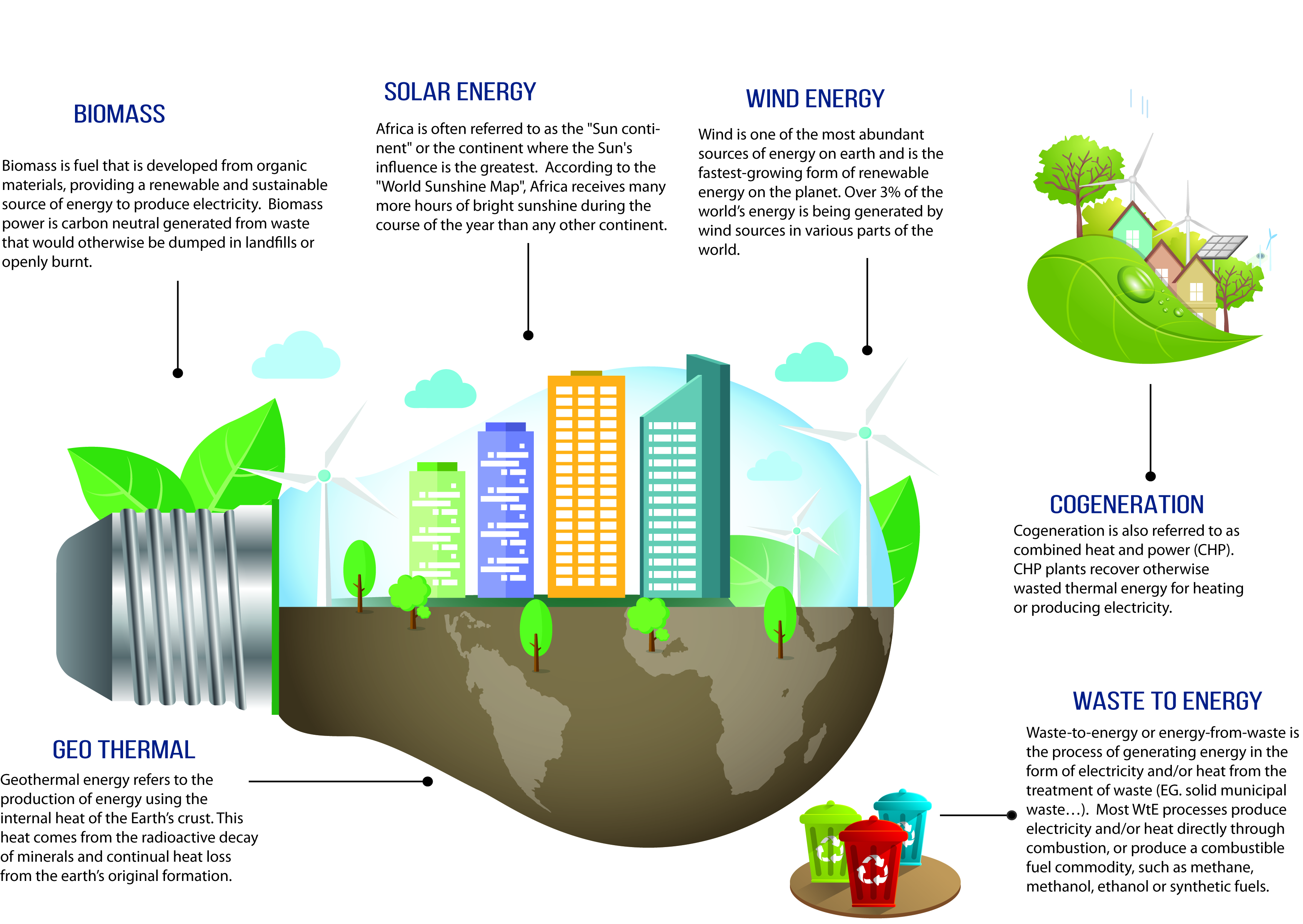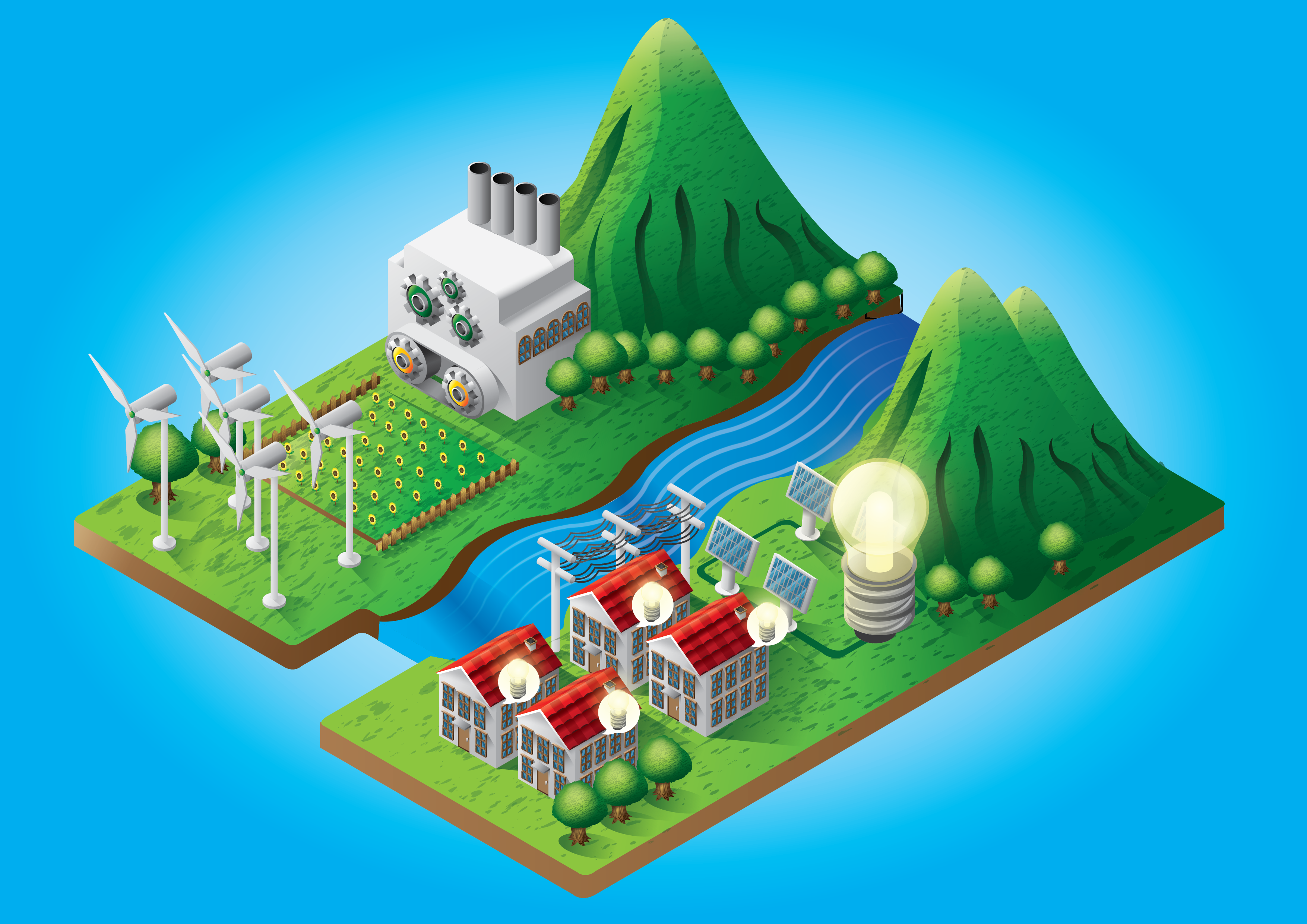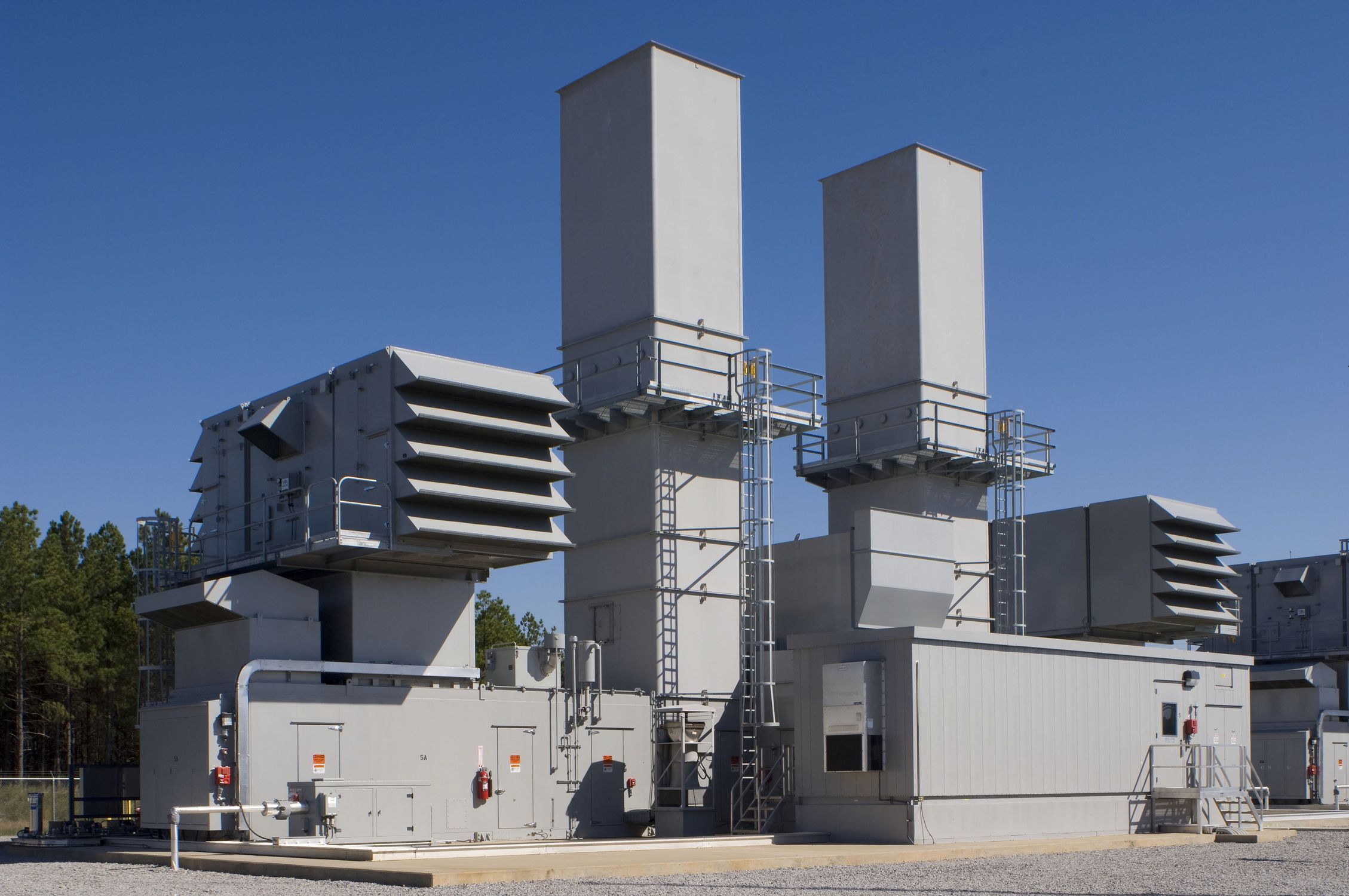Focus on Renewable Energy
PuRK Energy targets both renewable energy projects, waste to power projects (including cogeneration and combined heat to power and biomass)
Renewable Energies Focus
PuRK Energy provides innovative and flexible project and build solutions, customised to suit local dynamics and client needs.

Solar Energy
Africa is often referred to as the “Sun continent” or the continent where the Sun’s influence is the greatest. According to the “World Sunshine Map”, Africa receives many more hours of bright sunshine during the course of the year than any other continent. Most of the sunniest places in the world are on the African continent, due to the general low cloud cover in the sky. This gives solar power the potential to bring energy to virtually any location in Africa
Geothermal Energy
Geothermal energy refers to the production of energy using the internal heat of the Earth’s crust. The production process involves the drilling of wells into the Earth’s crust and the heat or hot water is extracted and used directly to heat buildings and homes, or is used to produce electricity in a geothermal power plant.
Biomass
Biomass is fuel that is developed from organic materials, providing a renewable and sustainable source of energy to produce electricity. Biomass power is carbon neutral generated from waste that would otherwise be dumped in landfills or openly burnt. Some examples of biomass fuels are wood chips, certain crops, manure, forest debris and some types of waste residues.
Waste to Energy (WtE)
Waste-to-energy or energy-from-waste is the process of generating energy in the form of electricity and/or gas from the treatment of waste (e.g. solid municipal waste, etc). Most WtE processes produce electricity and/or gas directly through combustion, or produce a combustible fuel commodity, such as methane, methanol, ethanol or synthetic fuels.

Wind Power
Wind Energy?
Wind is one of the most abundant sources of energy on earth and is the fastest-growing form of renewable energy on the planet. Over 3% of the current world’s energy is being generated by wind sources in various parts of the world.
Generally, annual average wind speeds greater than 4 meters per second (m/s) (9 mph) are required for small wind turbines. For utility-scale wind power plants, a minimum average wind speed of 6 m/s (13 mph) would be needed. It is then not a surprise to find that the best wind in Africa is located in the coastal regions of the continent.
Advantages of using wind energy
- Wind is a clean energy source – Converting wind energy into electricity releases no harmful by-products into the environment as compared to conventional fossil fuels which is used to generate electricity in most parts of the world.
- Wind energy projects create jobs for both skilled and unskilled workers.
- Wind energy brings electricity to rural communities – Most wind farm projects are set up in rural communities, as the land and environmental conditions are ideal for renewable energy initiatives. Wind farms bring clean, affordable and sustainable energy to these communities, as well as to other areas that don’t have access to electricity. Wind energy can also power schools, hospitals and clinics that wouldn’t otherwise have access to electricity.
- Wind farms reduce the dependency on fossil fuels – fossil fuels are finite. Wind farms, as well as other renewable energy sources, help to reduce our dependency on fossil fuels.
Cogeneration
Cogeneration is also referred to as combined heat and power (CHP). CHP plants recover otherwise wasted thermal energy for heating or producing electricity.
Challenges
Solid waste is a huge challenge facing South Africa, most ending in landfill dumpsites. Key contributors include Increasing population, conflicting demands for land and only a few primary landfill sites, with landfills across SA filling at alarming rates.
The main problems with landfills are that carbon dioxide, methane, volatile organic compounds emissions and other hazardous pollutants are discharged into the atmosphere. Other challenges are surface water, groundwater and soil contamination. There is presently legislation drivers to reduce the number of landfills.
Solutions
The Global WtE market is forecast at US$ 40m (2023), growing at a rate of 5.5% CAGR since 2016. Waste to energy (WtE) is a proven and viable solution for disposal of Municipal Solid Waste (MSW) and energy generation.
WtE solutions offers many benefits:
- Generates electricity from waste
- Reduces waste volumes = less landfill sites = reduced need for land
- Eliminates health and safety problems
- Creates jobs and employment opportunities
Reach Us
Let's collaborate in waste-to-energy projects
Unit 3, Block 1, Rivonia Close Office Park,
320 Rivonia Boulevard, Rivonia, Johannesburg






